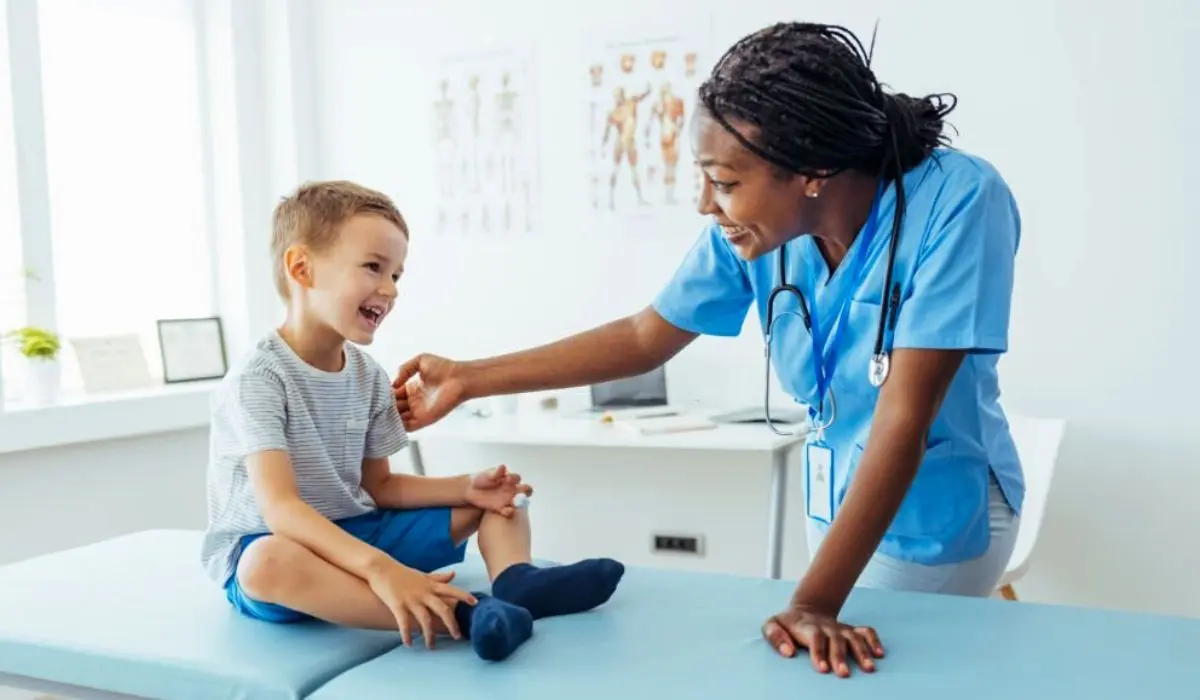ADHD, or Attention Deficit Hyperactivity Disorder, is a widespread neurodevelopmental disorder in children.
It is known for persistent signs of inattentiveness, impulsivity, and hyperactivity, which can hinder a child’s daily functioning.
Statistics reveal that it affects 5 to 10 percent of kids worldwide. This makes it one of the most regular childhood mental health issues.
The main causes are still unknown, but research suggests a mix of genetics, environmental and neurological elements are involved in its growth. Boys are typically diagnosed more than girls.
Symptoms may differ from one child to another. Common indications are difficulty concentrating; being easily distracted; forgetfulness; talking too much or interrupting; fidgeting; and not following instructions. If left untreated, these signs can last into adulthood.
It should be noted that having one or two symptoms doesn’t always mean a child has ADHD. An accurate diagnosis can be made through a healthcare professional.
Early recognition and treatment can significantly enhance outcomes for children with ADHD.
Understanding The Symptoms Of ADHD
Understanding the Symptoms of ADHD: A Comprehensive Guide
ADHD, or Attention Deficit Hyperactivity Disorder, is a neurodevelopmental disorder commonly observed in children.
It is essential to understand the symptoms of ADHD to effectively diagnose and manage this condition.
Here are three key points to help comprehend the manifestation of ADHD:
- Inattention: Individuals with ADHD often struggle to maintain focus and easily become distracted. They may exhibit difficulty in staying organized, following instructions, and completing tasks. This inattention can significantly impact their academic performance and social interactions.
- Hyperactivity: Hyperactivity is another core symptom of ADHD. Children with ADHD tend to be overly energetic, constantly on the move, and unable to stay seated for extended periods. They may also engage in impulsive behaviors, such as blurting out answers or interrupting others.
- Impulsivity: Impulsivity is closely linked to ADHD and can manifest in various ways. Children with ADHD may act without considering the consequences, leading to disruptive or risky behaviors. They may struggle with waiting their turn, speaking out of turn, or expressing their thoughts without filters.
It is important to note that ADHD symptoms can vary in severity and may change over time.
Diagnosis should be made by a qualified healthcare professional based on a comprehensive evaluation of the individual’s behavior patterns.
Understanding and recognizing the unique challenges faced by individuals with ADHD is crucial in providing appropriate support and interventions.
By identifying the symptoms of ADHD early on, parents, educators, and healthcare providers can collaborate to develop tailored strategies to assist children in managing their condition effectively.
Diagnosing ADHD In Children
Diagnosing Attention-Deficit/Hyperactivity Disorder (ADHD) in children is a complex process that entails evaluating various symptoms and behaviors.
Professionals typically assess a child’s medical history, observe their behavior in different settings, and gather information from parents, teachers, and other caregivers.
Employing specific assessment tools, such as behavior rating scales and cognitive tests, aids in determining if a child meets the criteria for ADHD.

This multifaceted approach helps clinicians make an accurate diagnosis, leading to appropriate interventions and support for children with ADHD.
To have a comprehensive understanding of whether a child has ADHD, clinicians employ various diagnostic techniques.
These techniques may include evaluating the child’s behavioral patterns, observing their interaction with others, and assessing their response to different stimuli.
Additionally, clinicians gather information from multiple sources, including parents, teachers, and other caregivers, to gain a comprehensive perspective on the child’s behavior and symptoms.
By combining these assessment methods, clinicians can form an accurate diagnosis of ADHD in children.
Treatment Options For ADHD In Children
Treatment options for ADHD in children:
- Medication: Medication can help manage symptoms of ADHD in children.
- Therapy: Behavioral therapy can teach coping skills and improve behavior.
- Behavior strategies: Creating a structured environment and offering rewards for positive behavior can be beneficial.
- Lifestyle modifications: Regular exercise and a healthy diet can support overall well-being and symptom management.
It is important to note that while medication may be effective, it is not the only solution. Behavioral and lifestyle interventions should be utilized alongside medication for optimal results.
Related:- What Is Arachnoiditis? Explain Its Causes & Relief Methods!
Managing ADHD In Daily Life
Managing ADHD in Daily Life: A Holistic Approach to Navigating the Challenges
ADHD, a neurodevelopmental disorder, can present various difficulties in a child’s daily life.
However, employing effective strategies can help manage ADHD and promote better overall well-being. Here are key points to consider:
- Establishing Structured Routines: Creating a consistent daily schedule can provide a sense of predictability and stability that is beneficial for children with ADHD. By incorporating designated time slots for activities, such as homework, meals, and play, it helps them better manage their time and maintain focus.
- Providing Clear and Concise Instructions: Children with ADHD may struggle with following instructions or completing tasks. To address this, it is crucial to provide instructions in a simple, step-by-step manner. Breaking down tasks into smaller, more manageable parts can aid in better understanding and completion.
- Utilizing Visual Aids and Organizational Strategies: Visual aids, such as charts, calendars, and checklists, can assist children with ADHD in developing organizational skills and staying on track. Encouraging the use of color coding, labels, or reminders can further enhance task completion and reduce forgetfulness.
By implementing these strategies consistently, parents and caregivers can help children with ADHD effectively navigate daily challenges and improve their overall quality of life.
Read More:- What Foods Are Good For Repairing The Liver? 5 Best Foods For The Liver
Conclusion
Empowering children with ADHD and their families is crucial for their well-being.
Educators, parents, and healthcare professionals should provide tailored strategies like visual aids, structured schedules, and positive reinforcement.
Encouraging children to embrace their strengths and talents is essential. Involve them in activities that align with their interests. Do not forget the impact on their families.
Access to information, support groups, and counseling services can help. The APA also found regular exercise beneficial for children with ADHD.
It reduces hyperactivity and improves attention span and cognitive function. It promotes overall mental health and well-being.

